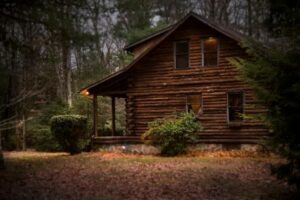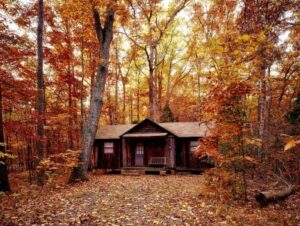Why Log Cabin Kits for Public Agencies & Government Projects in 2024?
Back in the 1930s, when the stock market crashed and changed the lives of millions, the federal government put people to work with public works projects. There was even an administrative office for the program, aptly dubbed the Works Progress Administration. The WPA was instrumental in a good amount of construction around the country, especially in the monument areas and national parks. In fact, many of the big structures and buildings at national parks date back to this period of construction.
A Convoluted Acquisition Mess Today
However, today, the federal government, state, and local governments have to deal with competing interests associated with limited revenues, budget swings, and contracted-out labor. As a result, when resources are committed to capital outlay projects for restoring or replacing buildings, the attention tends to get focused on those projects that will last the longest. As a result, smaller structures like work cabins or remote log cabin structures can be shortchanged. They are just as useful, especially for rangers and teams that have to work remotely and spend time in the field for extended periods, but without maintenance, these buildings can and do fall apart.

Volunteers Can Only Do So Much
For a number of years now, some agencies have relied on volunteers to help with the restoration work of existing cabins and structures. Both the Bureau of Land Management and the U.S. Forest Service, for example, have ongoing volunteer programs every summer for work and repair. However, it’s not always enough. Some structures just need to be replaced outright and can’t be used due to being too unsafe. The solution for these agencies and others is now available with the convenience of log cabin kits.
Standard Building is Too Expensive Now
Previously, most cabins had to be built similarly to homes. The materials were brought in and aspects of an agency cabin were fabricated on the site. This can be very expensive today as well as difficult when trying to secure all the resources and skills through the public bidding and contracting process. Instead, agencies should start considering pre-fabricated build kits which come with all the materials and can be acquired through direct procurement channels instead.
In many instances, professional labor for building these kits can be part of the same procurement, being downstream activities for the primary purpose, the purchase, and utilization of the kit sold. This approach avoids the separate contracting bid approach, risking ending up with poor skilled labor, and ensures that the product is built correctly by the manufacturer who sells it.

Kits Save Money, Time, and Value
With the prevalence of high-quality frontier log cabin kits available today, it’s really worth the time for public agencies to rethink how they are approaching the remote cabin strategy for parks, land management, wilderness areas, and similar. The results could be extremely beneficial for taxpayer resources as well as long-lasting for program efficiency and effectiveness in the field.
In Conclusion
In conclusion, the landscape of public projects and government initiatives has evolved significantly since the days of the Works Progress Administration. Today, faced with budget constraints and complex procurement processes, public agencies need innovative solutions to replace vital infrastructure, including remote cabins for field teams and rangers. While volunteers have played a crucial role in these efforts, the demand often exceeds their capacity, leaving many structures in disrepair. Enter the era of log cabin kits, offering a cost-effective, time-efficient alternative to traditional construction methods. By embracing pre-fabricated build kits, agencies can streamline procurement, mitigate risks associated with skilled labor shortages, and ultimately, optimize the allocation of taxpayer resources. In doing so, they not only ensure the longevity and safety of essential facilities but also enhance program efficiency and effectiveness in the field for years to come.
